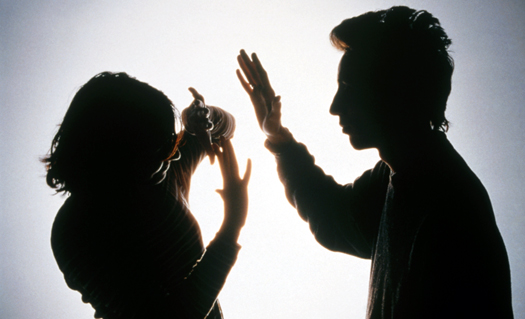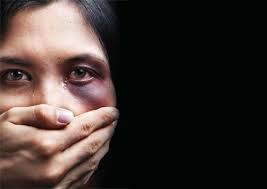Fakhar Durrani
Islamabad — Whenever you see some civil society woman activist or a woman parliamentarian speaking on a TV show, do not be misled with the notion that Pakistan is now an equal opportunity country.
It has been on the second last in the Annual Gender Gap Index rankings in the last three years.
“We’re too much protective about women; seldom let them out of home or let them exercise their free will in marriage, vote, career selection,” says Hina Haider, a teacher of a private school of Lahore.
The 2014 data of National Police Bureau’s Gender Crime Center says that on average more than one woman is killed every day in the name of honor and 56 women were killed solely for giving birth to girls.
The last three years’ consecutive scoring of second last position in the annual Gender Gap Index ranking, reflects Pakistan needs ‘centuries’ to ensure gender equality.
According to data of National Police Bureau, during 2014, 12,558 cases of violence against women and girls were reported including 517 cases of domestic violence, 3141 of physical abuse, 17 of psychological abuse, 26 of economic abuse, 665 of forced marriages, 46 of incest, 6 Vani, 1 of Sawara, 6 of Wata Sata, 41 of Life threat, 139 of stalking, 2863 of sexual assault, 770 of sexual harassment, 29 of acid throwing, 381 of honor killing, 6 of stove burning, and 3904 cases in other categories.

Sonya Iqbal 19, of small village Basti Tiba Pathan Wala of district Layyah in southern part of Punjab was lynched to death with iron rods by her uncle for marrying the man of her own choice on January 01, 2014.
She eloped with Abdul Sattar in June 2013, and settled in Multan where they held court marriage and requested the court for giving orders for their protection. The Lahore High Court’s Multan Bench issued orders of their protection. However Sonya’s family by pressurising the boys family demanded to divorce her and give her back to them.
Abdul Sattar’s family later agreed to divorce her as they could not bear the pressure and returned Sonya to her family. However at that time she was pregnant and her family forced her to abort but she refused. Then came doomsday: one morning her uncle came to their home, and called her to a room.
Police say Sonya’s mother was alerted to cries. When she ran to the room the door was shut from inside. After few minutes Sajjad, the uncle of Sonya, came out of the room with his clothes drenched in blood and told her mother that he has killed her “prostitute daughter”.
Her mother got registered a case against Sajjad and according to post-mortem report Soniya was battered 54 times with an iron rod piercing it one ear to the other. Despite passage of almost two years the police is yet to arrest the killer whereas Sonya’s father divorced her mother after she refused to withdraw police case against Sajjad and did second marriage.
When this correspondent contacted District Police Officer Layyah Ghazi Salahuddin said they have sent several police parties for the arrest of Sajjad but none of the family member cooperated the police. He however said sooner or later the culprit would be brought to justice.
Just like Sonya there were 380 more victims of honor killing who were killed last year brutally by none other than their own families. According to National Police Bureau’s Gender Crime Center’s data 208 accused killers are yet to be arrested. Similarly the data shows 29 victims of acid throwing but no serious action has been taken against the perpetrators as yet.
It is pertinent to mention here t hat Pakistan signed, ratified and adopted international instrument of ending violence against women – UN Convention on the Elimination of all forms of Discrimination against women (CEDAW), in 1996. Also Pakistan is signatory to the MDG’s, where the third goal on “gender equality and empowerment of women” essentially acknowledges the need to address gender-based violence.
Although the government declared that all children of the ages 5–16 must go to school, currently literacy rate of females is 47% as of 2014, data of Pakistan Bureau of Statistics suggests. Pakistan’s maternal mortality ratio, estimated to be 260 deaths per 100,000 births, with over 75 per cent of deliveries taking place at home and skilled personnel attending only about 20 per cent of them, is estimated to be one of the highest in South Asia.
As of 2008, out of the 47 million employed people in Pakistan, only 9 million were women, and of those 9 million, 70 percent worked in the agricultural. The proportion of all female-headed households in Pakistan was estimated as 10.9 percent, with women heading 11.5 and 9.7 of rural and urban households respectively, National Institute of Pakistan Studies’ research reflects.
The Constitution of Pakistan, 1973, Article 27, states that women would have an equal opportunity to enter the civil service as men. In 2007, the GoP adopted a policy that 10 percent positions in government were to be reserved for women and allocated according to the share of total civil service positions allocated to each province/region.
However due to lack of educational opportunity at the matriculation and above levels limit women’s ability to compete for high scores on tests used to rank candidates to be considered for a post. During 2008 to 2013, five women were Parliamentary Secretaries out of a total of 26 (20 percent). Women were chairs of less than 20 percent of the Standing Committees in the National Assembly and the Khyber Pakhtunkhwa (KP), Punjab and Sindh Provincial Assemblies. Women representatives were able to move 20 out of 53 members’ bills during this period, data shows.
Similarly, none of the 17 judges of the Supreme Court are women. According to a national level survey conducted by Aurat Foundation, seventy percent of women are not allowed to leave the home to: i) visit a bank, ii) attend a meeting, iii) go to a job or iv) pursue education.
According to a multi district study in Pakistan by Rutgers World Population Foundation, 66 % of interviewed women had experienced sexual violence and three fourth of the interviewed women reported having experienced physical violence. It is important to note that socio-cultural and structural barriers as well as victim shaming contribute to severe under-reporting of violence against women and girls.

Muhammad Rizwan Saeed Program Manager in a local NGO working on gender issues in Pakistan says, discrimination and violence are major roadblocks in social growth and justice in any society.
“Gender based discrimination and violence because of the dis-proportionally large numbers of individuals vulnerable to it and its intersection with most other development indicators such as education, health, economic opportunity, quality of life becomes a critical issue that needs to be addressed. Moreover it is intensified for certain groups because of divisions in society in the form of religious or sexual identity, class, ethnicity, age and disability,” commented Rizwan.
He said, there are three women’s governmental/quasi-governmental organizations in Pakistan at national and provincial levels, National Commission on Status of Women, Provincial ( KP and Punjab) Commissions on the Status of Women, Social Welfare and Women Development departments and Women’s Caucuses at National and Provincial Assembly levels but they too are facing multidimensional challenges.
The above stated state of affairs, he said is not the product of single factor or linked to a specific time period. Gender injustices and inequalities are a structural phenomenon with roots in our cultural, socio-economic and political power relations. These reduces women to economic and emotional dependency, the property of some male protector or the masculine state.
The World Economic Forum Global Gender Gap 2014 report placed Pakistan in the second lowest (141st) spot in the world in terms of gender disparity. Talking about this gap, WEF said in a statement, “Based on this trajectory, with all else remaining equal, it will take 81 years for the world to close this gap completely”.
